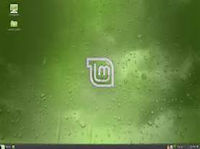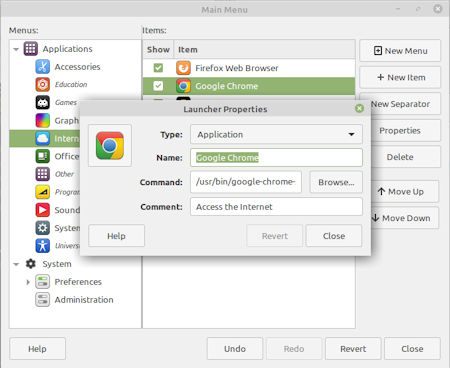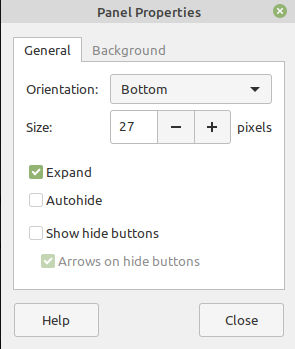
 |

1. How do I get the size of a Folder?
Open the Properties of the Folder and it will display the size (the number of items and the sum of files
sizes) e.g.
Contents: 8 items, totalling 5.4 MB
2. How do I view properties of files?
You can right click the file, and select Properties. The Properties will show the type of file, its size, location, last accessed date and time, when it was created, associated emblems or icons, the Permissions, and some notes.
3. How do I get a list of disks and folders in Explorer?
The folder window lists folders and disks on the left hand side for you. It shows some Favourite or common folders at the top left. You can change the layout via View, Arrange icons menu.
4. How do I change the background image?
Right click the Linux desktop (make sure any windows or closed or minised first), then select Change desktop background and select a wallpaper image to use.
5. I find the current desktop too slow. What can I replace it with?
Fortunately, in linux there are many desktop replacements (also called Window Managers) including Gnome, KDE, Unity (Ubuntu), Ice, Afterstep, Blackbox, Dwm, flwm, miwm. Use Software Manager to select a different window manager.
6. How do I change the size of the Icons on the desktop?
Open the Control Centre, select Desktop Settings, select Interface, then change Icon size to small or large.
7. How do I switch between programs in Linux?
There are several ways. You can select the minimised window in the taskbar at the bottom of the screen or you can press Alt+Tab to switch between windows.
8. What keyboard shortcuts can I use on the desktop?
| Shortcut | Description |
| F1 | Open Desktop user guide (help) |
| Alt+Up | Parent folder |
| Alt+Left | Back |
| Alt+Right | Right |
| Ctrl+L | Location |
| Ctrl+R | Refresh, reload |
| Ctrl+W | Close window |
| Ctrl+E | Search |
| Ctrl+A | Select all |
| Shift+Ctrl+L | Invert selection |
| Ctrl+F | Search |
| Ctrl+N | New window |
| Ctrl+Y | Redo |
| Ctrl+X | Cut |
| Ctrl+C | Copy |
| Ctrl+V | Paste |
| Ctrl+Z | Undo |
| Ctrl+W | Close Window |
| Del or Delete | Delete |
| Alt+Home | Home folder |
| Ctrl+ + or - | Zoom in/out |
| Ctrl+0 | Normal zone |
| Windows | Open Applications menu |
| Windows+D | Show desktop |
| Windows+E | Open file manager |
9. Can I edit the Menu contents?
Yes, In Mint Linux, right click the menu button at the bottom left and select 'Edit Menu'. Here you can modify, add and remove groups and program items.
To add or remove items, tick or un-tick the box in the Show column next to the item.
To add a new item, select New Menu, and enter a Name and Comment.
To add a new program itcon, select New Item, select type (Application, App in terminal or Location), a Name, Command (use Browse to look for it) and a Comment.
You can also add seperators between items in the menu and edit properties of existing items and re-arrange items via the Move Up and Down buttons.

10. Can I change or move the Panel (task bar) on the desktop?
Yes, right click the bar at the bottom of the screen and select Properties. Here, you can change the Orientation (bottom, top, left or right), size (in pixels,) and whether it can be expanded, or hidden.
You can also set the background of the panel using system theme, colour or a background image.
Additional items can be add to your panel by selecting Add to Panel, such as Battery charge monitor, Clock,
Force Quit, Lock screen and so on.
Additional Panels can be setup by selecting New Panel, (by default it adds it to the top of the Desktop) and can set properties there.
